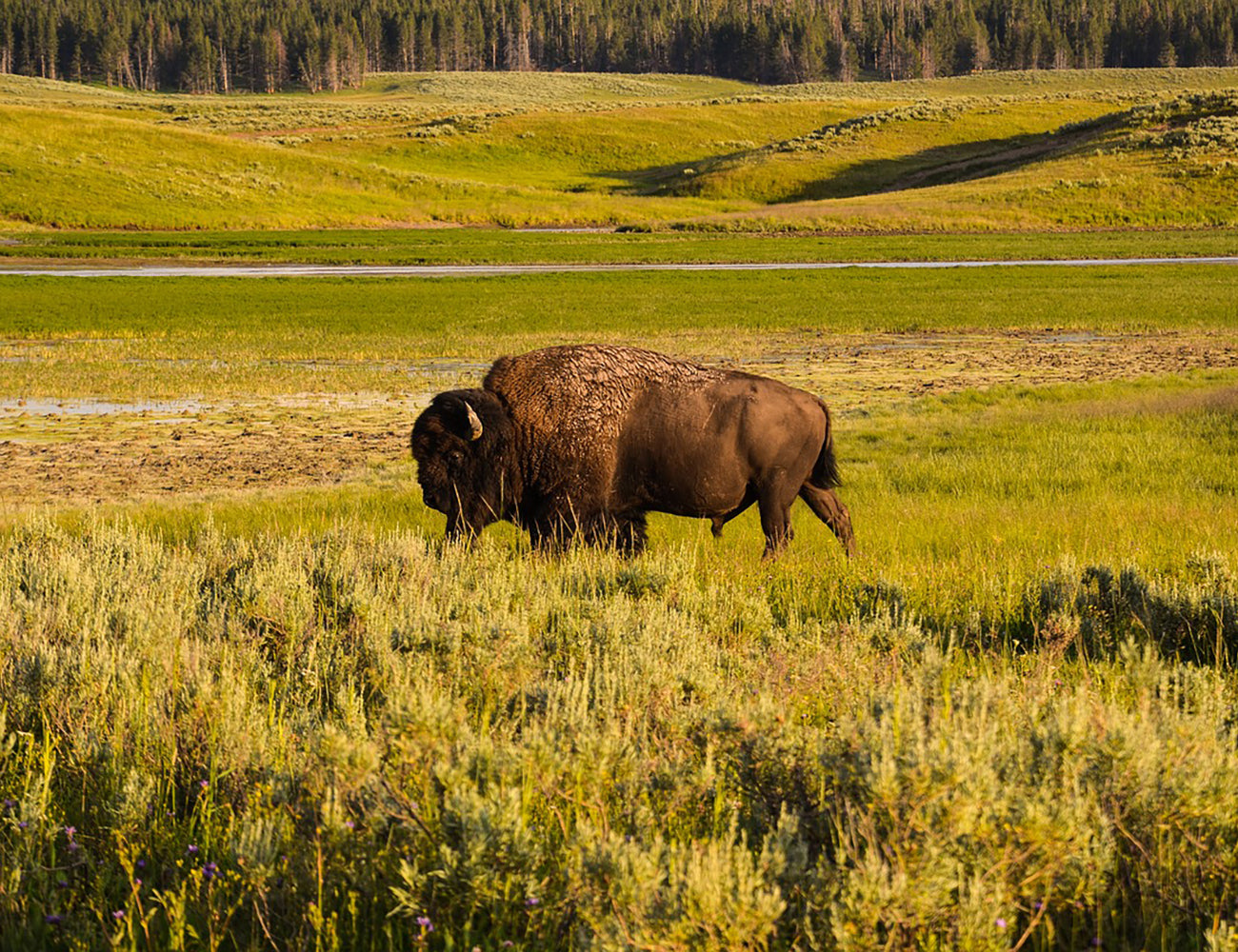BIG HORN BISON CONSERVATION HERD


Bison are closely related to cattle, so they are susceptible to many of the same diseases. However, bison have stronger immune systems. Because they live in the open, they are less likely to infect one another. You should vaccinate your bison herd for common cattle diseases. As a precautionary measure, test and quarantine all new animals for three months before allowing them to enter the herd. Because of the bison’s rugged nature and calving ease, a veterinarian’s assistance is rarely needed; however, you should locate a veterinarian for vaccinations and emergencies.
Bison should be on a routine deworming program for tapeworms, roundworms, lungworms, flukes, and other parasitic worms. The deworming program should be developed with a veterinarian, and should take into account climate, regional and farm parasite problems, and grazing intensity. External parasites, including flies, louses, mites, and ticks, can be controlled with strips, baits, sprays, foggers, dust bags, and liquid products.
Any bison transported across state lines must have all their health records, including negative bovine tuberculosis and bovine brucellosis tests, prior to shipment. Bison born on your farm and transported from your farm directly to an in-state slaughter facility do not need testing or health records.
In the wild, bison eat twigs, leaves, and grasses. An intensive grazing program will help you make the most use of your pasture. Bison continue to graze through the winter by rooting under the snow. Grasses that stand up through the snow and retain a high protein percentage in the stems are best for winter pasture. Hay should be available when the snow is coated with ice. Grain rations should be included in the winter or when pasture conditions are poor.
Salt, vitamins, and minerals should be added to the diet as needed. The extra nutrition gained from supplements increases reproductive efficiency and weight gain. Selenium is especially important for reproduction because a deficiency of this mineral causes an increased number of aborted calves. The soils in the eastern United States have very little selenium, and since bison get most of their nutrition from forage, it is important to supplement selenium.
Bison require 1 pound of roughage per 100 pounds of body weight for digestion and 2 pounds of dry matter per 100 pounds of live weight for energy. Clean, fresh water should be available at all times. A herd of 32 animals may require up to 500 gallons of water per day during the summer months. For added weight gain and to improve meat texture and flavor, you should begin feeding grain 90 to 120 days prior to slaughter. The meat of bison finished on corn has a taste similar to beef, which many consumers prefer.
